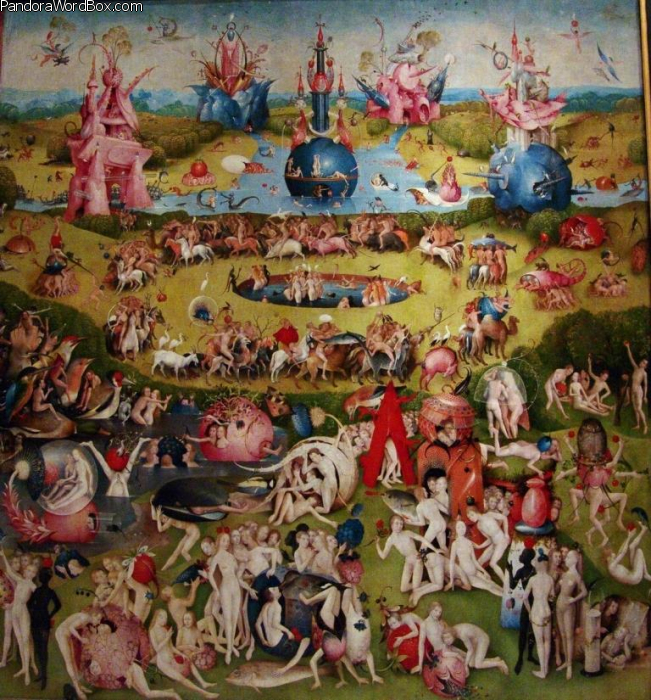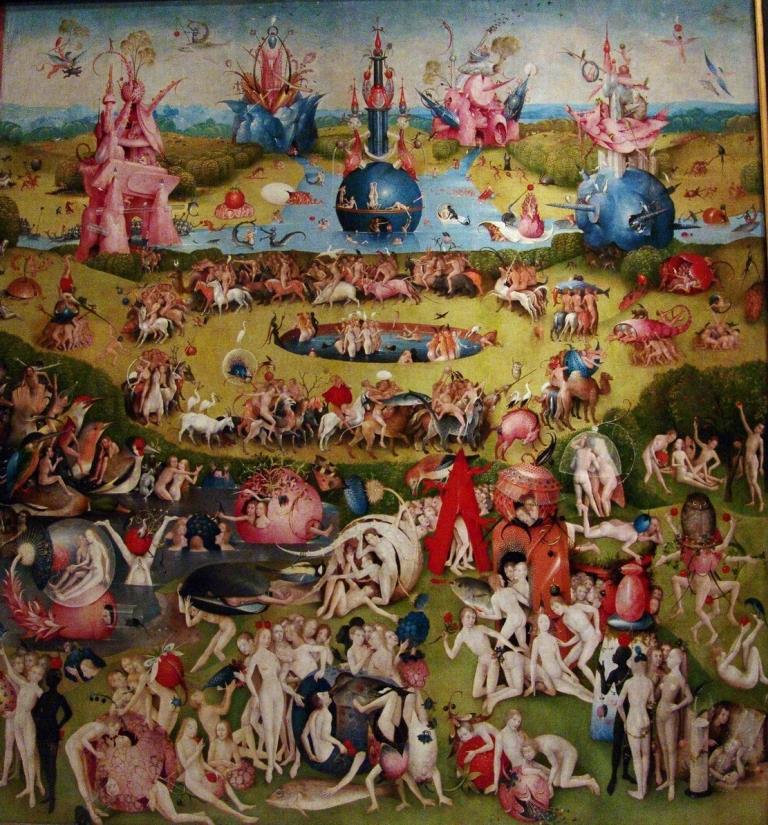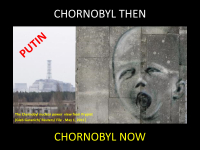Our websites offer information mostly for educational purposes with no intent to alter health care protocols nor to serve as a sole source of medical information.
Always seek the advice of your local health care provider.
|
×  Get the Point! PAIN – WOMAN – UKRAINE – PUTIN MOTHER – SISTER – SPOUSE – MOTHER RUSSIAN WAR – HOLOCAUST – GENOCIDE |
GARDEN OF DELIGHTS

"Garden of Heavenly Delights " (see details A | B | C | D | E | F | G | H | I | J | K | L | M | N | O | P | Q | R | S | T | U), 1500 Hieronimus van Aeken (known as Bosco or Bosch ) (1450 - 1516) El Prado Museum, Madrid, Spain
Perhaps it should be renamed as "Garden of "Earthly" Delights" - a Triptych showing multiple scenes of pleasures and consequences among mortals. Shown separately (see companion images) are two flanking panels, one representing "Paradise" and the other a vision of "Hell". The central panel depicts a way from Paradise to Hell paved by human "delights". The multitude of "delights" can be appreciated in companion images, among which emphasis on abuse of sexual and culinary pleasures conducive to illnesses are emphasized. In short, "delights" enjoyed by mortals, so says the puritanical Bosch, pave the way to hell. Continued by comments found in companion images.
The couple in a glass bubble may be a reminder of an old Flamenco saying, "happiness is like glass, it ruptures easily". In addition to men and women, animals are also included, an allusion to the sins committed by human beings. Continued, search key words "glass, glasnost", "rapto, rape, rapture, rupture ..., "couple, copula, copulate ..."
Experts see this work as being of moralizing character. In 1593, Emperor Felipe II sent this tryptic to El Escorial (a palace harboring a large collection of art, which for the most part is now preserved in the El Prado Museum in Madrid). The work was recorded then as "A painting of the Variety of the World or Modron~o" When the Triptych is closed, the back of the lateral panels shows a representation of the 3rd day of the creation of the world - God Father is represented as the Creator "He said it and all was done - He ordered and all was created". Once opened, the tryptic reveals the three scenes described above. In the center note the Fountain of Life - the overall panorama explores the nature of sin and the link between Paradise and Hell. The garden and its delights is a world consumed by sin, lust, and vigorous erotic and sexual drives (represented by nude figures engaged in natural acts as well as not so natural ones) - it conveys how the fragrance and appeal of sexuality is as evanescent and passing as is the fragrance of a strawberry (our corporate gardeners have eliminated the natural fragrance not only of strawberries but of most fragrant fruits - think of the stone hard, paper-like tasting fruits sold as tomatoes - profit and greed have replaced "taste"). (Translation and extract of label in the Museum del Prado in Madrid).
20210222 ww
|







